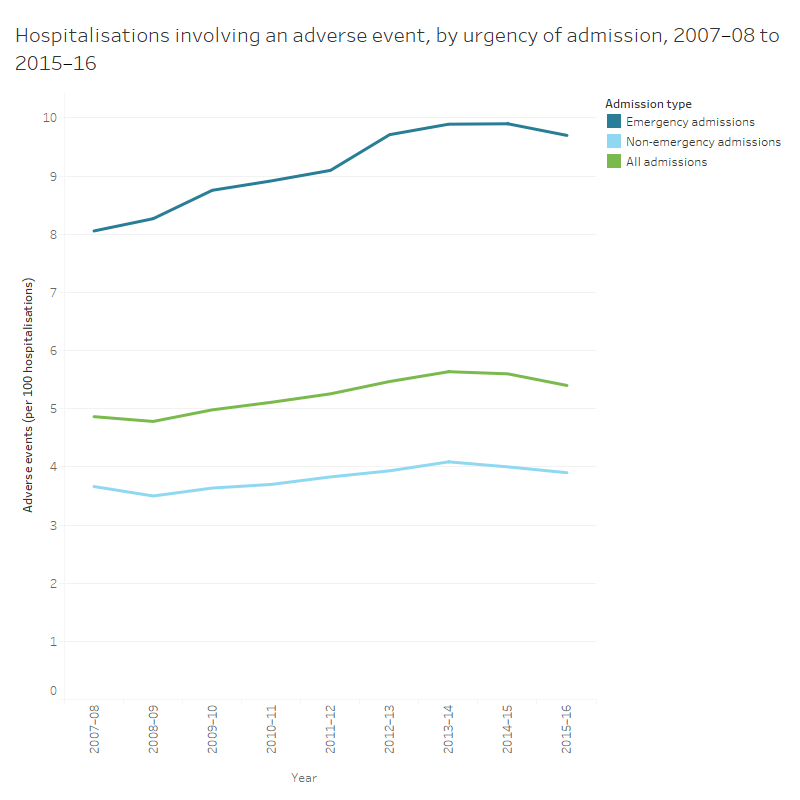Adverse events treated in hospital
Definition: The number of hospitalisations involving an adverse event. This is presented as a number per 100 hospitalisations.
Adverse events are defined as incidents in which harm resulted to a person receiving health care. They include infections, falls resulting in injuries, and problems with medication and medical devices. Some adverse events may be preventable.

Note: The data in the National Hospital Morbidity Database are collected primarily for the purposes of recording care provided to admitted patients, and their use for purposes such as reporting adverse events has not been validated for accuracy in Australia. The results should therefore be treated with caution.
Source: National Hospital Morbidity Database; Table S1.4.30.
- Between 2007–08 and 2015–16, the rate of adverse events in hospitals increased from 4.8 to 5.4 adverse events per 100 separations. This may reflect an increase in adverse event rate, but may also reflect changing patient profiles and/or an increasing focus on the safety and quality of hospital care and good reporting of relevant data.
- In 2015–16, adverse events for emergency admissions were more than double the rate for non-emergency admissions (9.7 per 100 separations and 3.9 per 100 separations, respectively).
- Adverse events were also more likely to occur in surgical admissions (7.7 per 100 separations) than non-surgical admissions (4.7 per 100 separations).
- The proportion of adverse events in public hospitals was 6.6%; it was 3.8% for private hospitals. The data for public and private hospitals do not account for differences in casemix and reporting practices across the sectors.
- The most common adverse event groups reported in hospitals were Procedures causing abnormal reactions/complications (in 51% of hospitalisations involving an adverse event) and Adverse effects of drugs, medicaments and biological substances (32%).
For more information, see Chapter 7.9 'Safety and quality of hospital care'.


